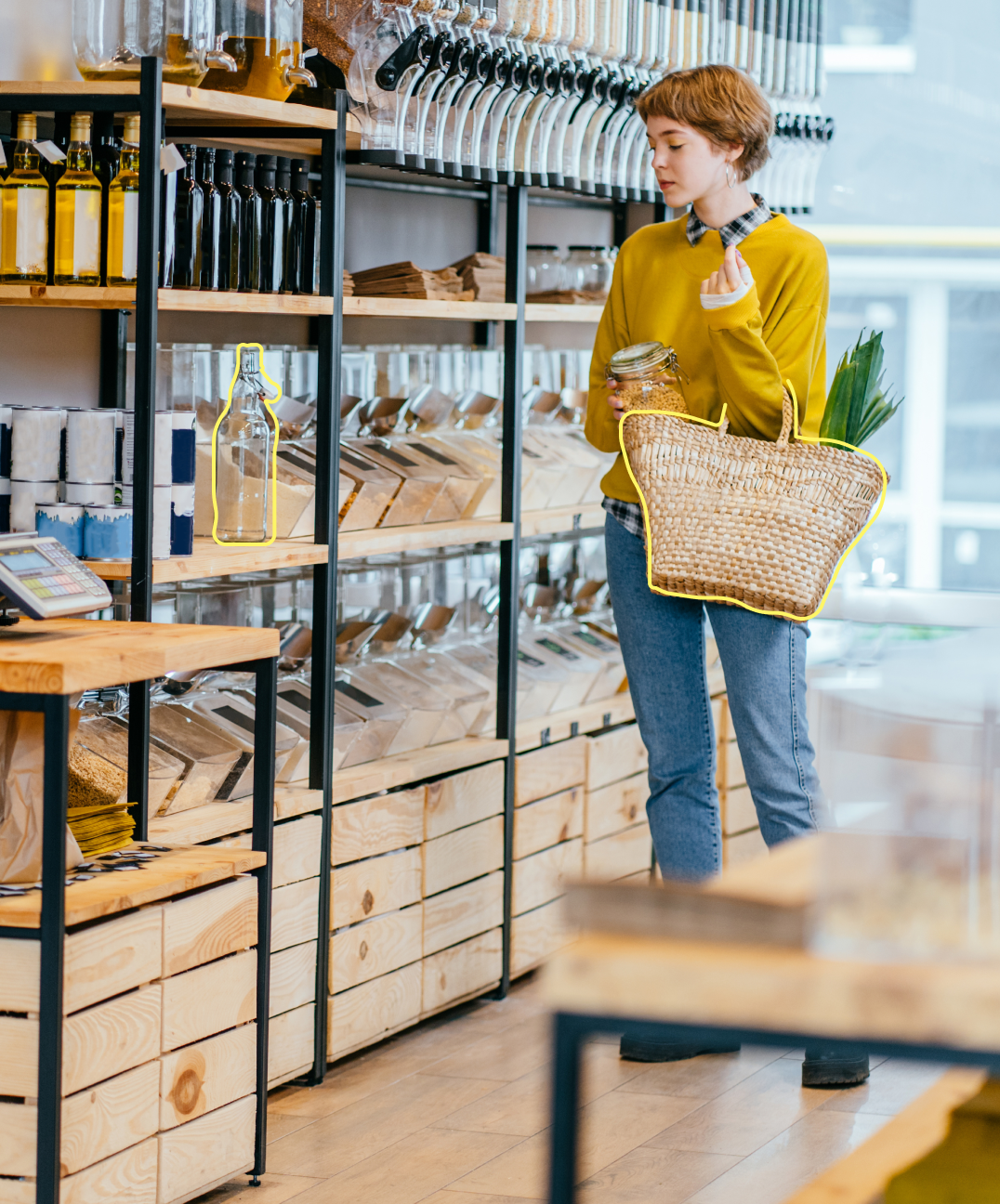Möchten Sie mehr wissen? Vereinbaren Sie ein Beratungsgespräch!
Short and sweet
In the consumer goods industry, another "sector" - if you will - must be differentiated and taken into account: the so-called Fast Moving Consumer Goods (FMCG). For on the one hand there are consumer goods, such as those of home furnishings and clothing, and then there are those Consumer goods for everyday use that have to be bought (very) frequently, namely the FMCG.
Food segment & Nearfood segment
Let's think of a fast goods rotationwe intuitively think first of food and personal care or personal hygiene products. This differentiation also has a name. To Food segment According to the Nielsen classification (US market research company), this category includes food, non-alcoholic and alcoholic beverages, and tobacco products. The so-called Nearfood segmentThese include, for example, personal care products and cosmetics, detergents and cleaning agents, paper hygiene and pet supplies.
A Statista survey shows how important it is to look at FMCG individually: Consumers in Germany spend more than 230 billion euros a year on food, beverages and tobacco products.. This in turn corresponds to a share of around 14 percent (!) of total private consumer spending. In the Nearfood segment the market volume is around 14 billion euros. In view of these figures, fast moving consumer goods can be said to be an "industry" in their own right.
So far, so good. We already know that consumer goods manufacturers:inside have to be subdivided again. Some goods for private use and consumption have to be bought more often than others. Now we would like to take a closer look at the market structures of these goods, the FMCG.
Structuring the market
The global players are none other than Nestlé, Procter & Gamble, PepsiCo, Unilever and Coca-Cola. Leading German FMCG manufacturers are Henkel, the Oetker Group and Beiersdorf, according to Statista. In Germany, the main shopping places for consumer goods for everyday use Discounters and hypermarkets. Discounters account for more than 40 percent of total food retail sales in Germany.
At Food Retail there is a high concentration. Here in Germany, the following are divided four leading groups of companies about 70 percent of the market! These include the well-known large groups around Edeka, Rewe, Aldi and the Schwarz Group. Retail groups from abroad often failed because of these giants and their establishment on the German market. Growing market share on the other hand Drugstore chains in the food tradelike dm and Rossmann.
Not yet fully established in Germany, but still worth mentioning, is the role of the E-commerce in the FMCG sector. Here, too, the figures speak for themselves. The share of FMCG products in total online retail sales grew to around 8.7 percent in 2019. From a global perspective, Germany still has some catching up to do here, or in other words, the potential has not yet been fully exploited. Nevertheless, the possibility of Ordering groceries online is used by around 3.65 million people in Germany every year.
FMCG Marketing
Special demands require special measures
Due to the fast turnover, FMCG also have special requirements for sellers, which should mainly be reflected in the marketing and sales strategy. The market is highly competitive, but also highly profitable. Companies therefore invest immense sums in marketing and advertising - everyone wants to stand out, everyone wants market leadership.
According to statistics, there are alone digital advertising spend for FMCG over half a billion euros in 2021. Traditional marketing channels are used as well as digital channels, especially social media channels such as Facebook, Instagram, Google and YouTube. TV, radio and newspaper advertising still play an important role, however.
Brand strength and brand preferences have always been, and in almost every industry are, a Success factor. It is no different with FMCG. On the contrary - these even play a particularly large role here. While this gives the established brands in the industry an advantage, it makes it all the more difficult for new players on the market.
Trends in FMCG Marketing
Three major trends are currently emerging in FMCG marketing that need to be taken into account. It has taken a while, but the FMCG industry is now also on board with what digital growth and digital strategies addresses. Artificial intelligence, loyalty programs for strengthening customer relationships, and real-time customer engagement that is not only more personalized, but also more cross-channel oriented, are becoming enormously important. Basically, we are also talking about data- and insights-driven marketing.
The keyword data-driven marketing brings us to trend two: Data Insights for FMCG companies are the main currency the future. Consumer information are the key to the kingdom. This is where many companies should continue to invest. Collecting such data analogously has long since ceased to be necessary. Tools for data analysis are usually included in software offers of ERP or CRM systems. You could also embed these on your website, for example! But also your social channels offer a wide field. The important thing is that a comprehensive picture of customers only makes sense when data from different sources is linked and viewed holistically.
Furthermore, the data collected in-house can also be combined with external data from corresponding studies - with the aim, new, improved personas to develop. These should be revisited from time to time in marketing anyway. The time when you have collected enough consumer data is perfect for tackling this to-do. Personas basically help to Needs different customer groups to identify, based on this Product optimization at operate, and lastly the Product placement and marketing at improve.
Eye tracking method are therefore fascinating. When customers are standing in front of a shelf in a supermarket, eye tracking can be used to identify the Eye tracking recorded be. Which products do consumers stick to, at what height are they placed, and which products are not noticed at all? After all, it is not unknown that the most expensive products in supermarkets are often placed at eye level and thus in the consumer's perfect field of vision.
And now for the trend par excellence - Sustainability and health. A healthy lifestyle and sustainable products are becoming increasingly important for consumers. Some companies are meeting these demands, others are being pushed off the shelf. One conclusion remains: such topics must now be bring to the fore. Let's take the Vegan industry as an example. Almost weekly new products come on the market, the shelves with vegan selection of food become ever larger, ever more heterogeneous, ever MORE. Other, less strongly in demand products, are pushed back. Here too - listen to your customers and meet their needs.
Ready for the next project? Let's talk!
We will be happy to assist you in an initial consultation.




